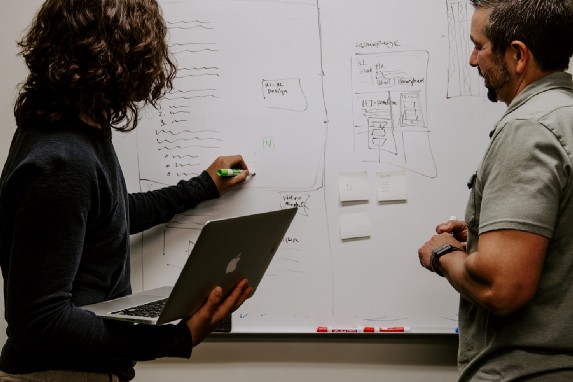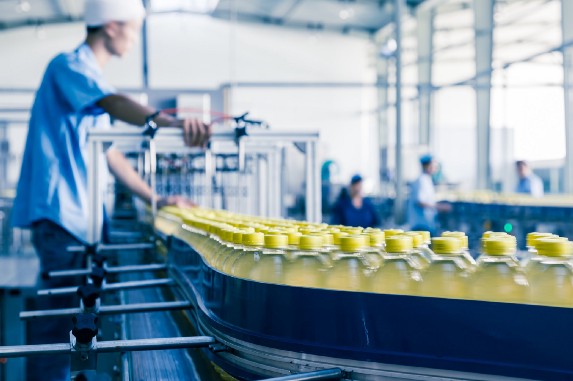The day of a Food Safety expert working in a food company starts. He or she grabs a coffee and sits in front of his or her computer. They open a supply chain dashboard and in 2 mins are able to access all the critical information about new relevant recalls, border rejections, new trends, and emerging risks that they supervise. And all of those insights are customized to serve the need of their own company and department. They feel safe that they will not miss something critical and preventable.
No, this is not a science-fiction scenario. The data is out there but making sense of the scattered and heterogeneous information is not a trivial task. Let’s see why.
An international food company has a complex structure with many departments focusing on the quality and safety of the supply chain. There are those departments examining ingredient verification, supplier verification, audits, experts working in factories, meanwhile others explore regulation and compliance. Each team needs to access the most relevant and historical data relating to recalls, border rejections, legislation, scientific publications, news, laboratory testing programs, new risk models, new methods, and systems.
Furthermore, each department can be organized in different teams that focus on food categories and hazards and thus, the same food safety insights are not relevant for all the teams. For instance, a team of toxicologists working in a food company that produces ready to eat products needs information pertaining the incidents relating to chemical hazards, to identify increasing and emerging risks in a very large number of ingredients. They need data on different types of mycotoxins (usually more than 15 different types) that have been identified in the ingredients that they are using, and to design the most efficient lab analysis plan that will ensure that any such hazard will be identified early; minimizing the risk of a product being recalled. Multiplying the number of potential hazards by the number of ingredients results is a very time-intensive task.
But can an expert that is already overwhelmed with information filter only the relevant information and data to identify trends and to assess risk? Such filtering and analysis needs a lot of time. Let’s get a deeper understanding into what is needed in order to assess risk effectively.
Risk assessment is not something generic and cannot be addressed at a single level of food production. Today the food supply chain is complex and global. A risk should be assessed at the level of incoming materials, suppliers, manufacturing, storage, distribution and retail. Teams of experts that monitor risks at different levels need to have access to the most critical and accurate data for the level that they supervise.
A team that focuses vertically on a specific material and ingredient category, needs data about all the types of hazards that have been reported for the specific category and the reason for a recall and border rejection. Furthermore, they need to be notified every time that a risk is emerging or significantly increased for the specific category of materials and ingredients.

Photo by Kaleidico on Unsplash
A regulatory team needs access to the legislation that applies in each region that the products are produced and sold. They need to know the limits for the hazards and very often these limits are different from region to region. Moreover, they need to monitor any change in legislation across all regions that they produce and sell their products to ensure compliance.
A team that performs audits of facilities (factories or plants) and suppliers, needs to be aware of the risks for all the ingredients that are managed and processed by facilities and suppliers so that they can prioritize audits accordingly. They also need to know the latest trends for the hazards in order to be well informed for these audits.
A team that is accountable for supplier verification needs to monitor the performance of the suppliers and to have visibility over all the potential hazards in the supply chain of each supplier. They need to identify all hazards for the ingredients that their suppliers are using — and with this knowledge at hand — define the specifications for each supplier.
A QA and FS team that is responsible for the design and the implementation of a food safety system like HACCP in factories, needs to have the best knowledge of all the potential hazards at the level of incoming materials and also at the level of processing, to ensure that the food safety system will be able to control all the critical points of the production. Changes in the supply chain call for an update of the food safety system. HACCP needs to be updated when there is a:
- Change in a raw material/ingredients/packaging material
- Change in a supplier
- Change in the sanitation and cleaning program
- Emergence of foodborne pathogens with public health issue significance
- Changes in legislation
- New scientific and technical knowledge

It’s essential that the team working in the factory obtain alerts every time that a review is needed in the HACCP plan due to a new hazard that may affect their supply chain.
An R&D team that designs and tests new products, needs to have access to all the potential hazards and fraud for each new ingredient that they would like to use and new trends that may affect the availability or the quality of these ingredients.
Finally, the management team needs access to consolidated reports for hazards trends in foods in order to make very critical decisions. The consolidated reports need a large amount of accurate and heterogeneous data such as food recalls and border rejections of their brands, their suppliers, and their competitors.
What do the experts working in all these different teams need today? Access to food safety insights that are customized for each level within the company’s management structure and for the ingredient categories that they are managing.
Food safety insights are a valuable asset for all quality assurance and food safety experts of a food company. Food companies can use these insights to empower their QA and FS experts with knowledge about hazards and emerging risks. However, the filtering of the information and data needs data processing skills and time. This is exactly where the new data technologies can help.
Food safety professionals can use simple and free services for accessing daily alerts — similar to Google alerts. On the other side, the implementation of a highly sophisticated IT system cannot be sustained and most of the time can lead to a dead-end for food companies. To access customized insights for food safety professionals in the QA and FS teams, a simple and straightforward user interface is required, fully integrated into a cloud-based platform. This way, a food company can harness the power of intelligent insights.
More and more food safety professionals in the QA and FS teams, especially during COVID-19 era, need to access customized insights. A simple and straightfoward user interface (UI- is the point of human-computer interaction and communication in a device) will be occured by the generation of TheFSM platform, major outcome of our project, The Food Safety Market (an EU funded project under Horizon 2020 Framework) which aspires to build an SME-powered industrial data platform, boosting the competitiveness of European food certification and establishing the remote auditing procedures and techniques not only at European level but also in a worldwide scale.
